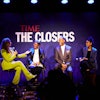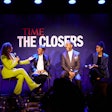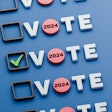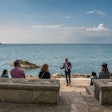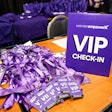Whether you are working with hotels domestically or abroad, the all-important banquet event order is now a standardized document across hotel brands—but that wasn’t the case 20 years ago. BEOs establish all the setup information for a meeting, including food and beverage orders, audiovisual needs and other details crucial to executing a successful event.
The software system each property uses to generate a BEO can be a challenge for planners. While one hotel may specifically list tax and gratuity and provide per-person totals in gross, another property may not delineate these extras or provide totals. This can cause miscommunication in total charges, making it difficult for planners to reconcile the BEO with their F&B budget.
Take notes from these directors of catering and convention services to make the BEO process as smooth as possible.
Format
There are two common elements to conveying information. The first is chronological order. “Regardless of whether you send your specs in a beautifully crafted Excel sheet or simply type them into the body of an email, sharing them in a chronological format is key,” says Breanne Garner, director of convention services at The Westin Grand Cayman Seven Mile Beach Resort & Spa.
The second is categorization. For each function within your meeting, state your various needs in the same format so it is easy for your hotel contact to compare across all functions. The most basic categories are food and beverage, audiovisual and meeting room setup. You might have specific billing instructions or client hot buttons you want to highlight as well, notes Garner.
Zena Phillips, director of catering and events for Conrad New York, recommends submitting specs (also known as a function sheet) as a summary of your events with date and time, room and meeting name, and menu requests. “Planners can also request the venue send a simple overview of the meeting merged out of the property’s booking system, and then can use this overview as the outline for their requests,” says Phillips.
Fees
Most BEOs do not provide the total cost of each function, and many ancillary fees are not listed on the BEO. As such, it’s key to review what fees may be added to your total bill. “It’s important to understand the tax and service charge percentages and what they are applicable to,” shares Walter Nemeth, director of catering for Hilton Cincinnati Netherland Plaza. For example, is it only F&B, or are the facility fees and rentals also subject to tax and service? Also, if you are at a freestanding facility, you may have additional labor and time fees, or fees for equipment such as tables, chairs and linens, notes Nemeth. In a hotel, the added fees could include flowers and custom linens.
Garner emphasizes all costs should be listed on the BEO in a clear manner, noting price, unit of measure and quantity. For example, if an event has a setup charge of $10 per person, ask if this is based on the set (the number of people the room holds) or on the guarantee (the number of people the planner guarantees will attend the meeting). “There should not be any surprises at the end of the event,” she says.
If the BEO does not report a per-person total, ask for one. “It should not be left up to the customer to decipher the charges on a contract and perform their own calculations,” says Phillips. Many venues use a booking system such as Delphi, which creates a banquet check with one simple click. The check will not only summarize the charges outlined on the BEO, but will also calculate tax, gratuity and service charge for the planner’s convenience. It’s the responsibility of the venue to prepare a pro forma statement of catering charges regardless of whether the hotel’s system can generate banquet checks, says Phillips. “The advantage of the pro forma is the venue will total the multiple functions over multiple days, saving planners time in performing all the calculations.”
Final Steps
To help make the review and signing of a BEO easier, “take a few minutes and read over the BEO from the perspective of someone who has nothing to do with the event,” recommends Nemeth. Does it cover all you have planned? Are the times listed correctly? Is the menu as discussed? Is the setup correct? Are the guarantee counts accurate? “Remember, this is the document the staff will be working from, so it’s important the hotel has all your information correct,” he says.
Don’t be afraid to mark up a BEO, either, rather than simply sending changes through an email chain. “I love it when planners make handwritten changes or create comments in a PDF directly on the BEOs,” says Phillips. “It expedites the process for the venue to review and make all the changes.” Phillips’ team at The Westin makes approvals easier by using a cover sheet listing all BEO numbers. Planners can then sign the cover sheet to approve an entire batch of BEOs without having to sign and date each page.
Photo credit: Wolfgang Puck Catering



